Haunted by the Past
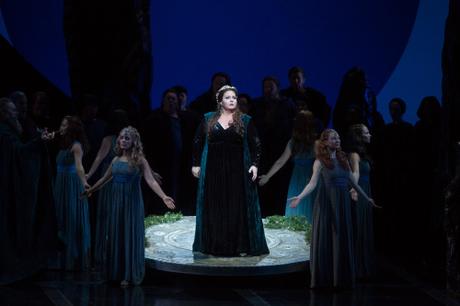 Angela Meade as Norma at the Met Opera (Photo: Marty Kohl / Met Opera)
Angela Meade as Norma at the Met Opera (Photo: Marty Kohl / Met Opera)
It’s fair to say that the ghost of Maria Callas has haunted the Metropolitan Opera’s casting department for well over half a century. The Greek-American singer whose fiery temperament on and off the stage has passed into the realm of legend was a noted advocate of Italian bel canto, along with much of the verismo school. But no matter the musical genre, Callas left her mark on everything she touched, which is why she was known by the soubriquet La Divina, or “the Divine One.”
Squally, ear-splattering high notes aside, Callas (christened Anna Maria Sofia Cecilia Kalogeropoulos) was nevertheless an artist through and through. Born in New York City, Callas lived, for a time, in Upper Manhattan, in the same general area as composer-lyricist Lin-Manuel Miranda grew up in. The family then took up residence in Astoria, Queens. After a time, Callas’ mother took her and her older sister to live in Athens, Greece, while both daughters were in their teens. Now, if you were deemed by fate to become a myth or a legend, where would you go to live?
We will deal more substantially with La Callas at a later time. Suffice it, then, to say that her interpretation of the title role in the Sicilian-born composer Vincenzo Bellini’s greatest creation, the opera Norma, has been all-encompassing. Even today, no opera house in the world would even think of mounting this masterpiece without taking Callas’ influence into account. The short time that she was with the Met, amid heated battles with General Manager Rudolf Bing, would mimic many of her own confrontations on stage with characters burdened by personal crises.
The possessor of enormous passions, Callas’ flame burned out too quickly and too soon. She passed away in Paris, in 1977, at age 53. While Bellini himself was short-lived (he died at age 34 in 1835), he left his mark on many composers who came after him, including Chopin, Donizetti, and Verdi.
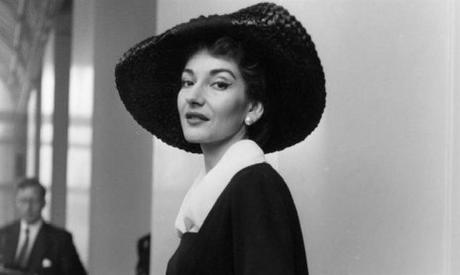
Wagner, of all people, was an admirer of Bellini’s languorous melodic output. That long line and the unique way that Bellini had of embellishing a viable idea while incorporating it into a character’s musical fabric had an altogether deep and abiding sway on the German composer’s mind-set. We need only cite two examples from Wagner’s oeuvre to confirm that fact: the Act II ensemble from Tannhäuser; and Erik’s lovely cavatina in the third scene of The Flying Dutchman.
Norma, which premiered at La Scala on the day after Christmas in 1831, had its origins in Greek tragedy. A well-schooled pupil of classicism, as well as an incurable romantic, Bellini modeled his finished work on those of his illustrious predecessor, Christoph Willibald von Gluck (Alceste, the two Iphigenia operas), and on his contemporary Giovanni Simone Mayr (Medea in Corinto), along with Luigi Cherubini’s Medea and Gaspare Spontini’s La Vestale (“The Vestal Virgin”), both operas that were prominent in Callas’ repertoire.
Principally, the myth of the sorceress Medea is of major significance to the plot of Norma. As we know from classical literature, Medea helped the hero Jason and his Argonauts steal the fabled Golden Fleece. Jason’s reward, as it were, was marriage to Medea and his fathering of her two children. When the couple fled Colchis to Corinth, Jason eventually abandoned Medea for the charms of the beautiful Glauce, the daughter of King Creon. In retribution, Medea murdered not only Glauce and Creon, but also her sons by Jason!
In the opera, the Druid priestess Norma has had a secret liaison with Pollione, the Roman proconsul. The action takes place in ancient Gaul, which the Romans have conquered. The Druids, headed by Norma’s father, the high priest Oroveso, plan their own revenge against their Roman usurpers. The situation is further complicated by Pollione’s abandonment of Norma for the young priestess Adalgisa. Can you guess what happens next?
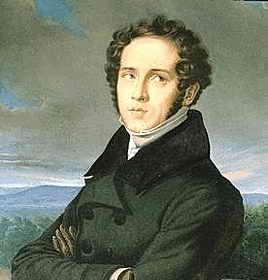
Instead of the expected infanticide, Norma spares Pollione’s children. She realizes, to her horror, that they are her children too! She tells us so, in the moving scena that begins Act II: “Ah, son miei figli, miei figli!” That melancholy, almost heart-breaking string introduction to this act clearly moved Tchaikovsky to weave a similar-sounding passage into the poet Lensky’s bleak lament from Act II of his opera Eugene Onegin, which opens with the line “Kuda, kuda, vi udalilis,” (“Where have you gone, oh golden days of my youth?”). Misery and melancholy, it seems, are universal sentiments.
There are many variations on the Medea theme, one of which, as related by the Greek poet Herodotus, has Medea flee Corinth and run straight into the arms of King Aegeus of Athens. He, too, drove the wily enchantress away when she tried to poison his mind against his son, Theseus, the fellow who grew up to slay the Minotaur.
In Norma, the priestess leaves her children in the care of Adalgisa, as the two join together in friendship in the glorious duet, “Mira, o Norma.” The opera ends tragically, however, as the vengeful Norma and her ex-lover Pollione, taken captive by the Druids as he was about to abduct Adalgisa from the temple, mount their own funeral pyre in a double sacrifice to the gods.
Cast Your Fate to the Winds
That long Bellinian line was in ample supply during the “Mira, o Norma” duet, especially during the cabaletta section. At the Metropolitan Opera broadcast of Norma on December 16, 2017, conductor Joseph Colaneri pulled the main melody along in stop-and-go fashion — first slow, then fast, then slower, then faster still. But it failed at quickening the pulse, something no Norma production should be without. When the late Australian soprano Joan Sutherland (“La Stupenda”) performed this duet on a 1970 broadcast with her friend and colleague, mezzo Marilyn Horne, it brought down the house.
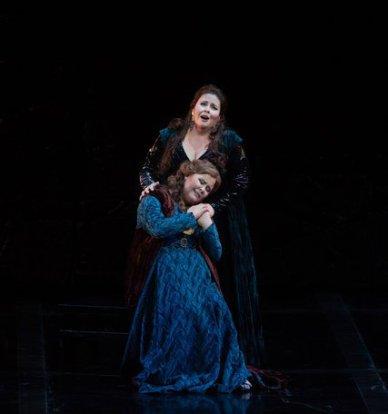
A guaranteed showstopper, it was nothing of the kind in this most recent of Met broadcasts. The number simply came and went without having accomplished what it set out to do. This is not to fault the singers, in this case soprano Angela Meade and mezzo-soprano Jamie Barton. Their pairing was indeed fortuitous, but it missed that timely spark of inspiration that any performance of the opera demands. What could have been the problem?
My theory, if I may be allowed to expand upon it, is that a pall had descended over the proceedings, due to the loss of James Levine. As indicated in my last post concerning Verdi’s Requiem (see the following link: https://josmarlopes.wordpress.com/2017/12/10/quid-sum-miser-verdis-requiem-and-the-end-of-a-met-opera-career/), the issue surrounding the dismissal of maestro Levine will haunt the company for years to come.
Unable even to speak his name on the air during one of the intermissions, General Manager Peter Gelb expressed the sadness of a company that has relied on Mr. Levine’s presence and guidance for over four decades. Whither thou goest now, Met Opera? Just as Norma had done, Levine had to be “sacrificed” to atone for past sins. The fate of the opera company, then, is in the public’s hands.
The “Callas” Mold Holds Firm
As for the specific artists involved in the performance, Angela Meade as Norma bravely ventured forth where most sopranos fear to tread. The thing she lacked most of all was that catch in the throat, that final touch of pathos that only Callas, and intermittently Spanish diva Montserrat Caballé, were capable of bringing to the part. In every other respect, though, Meade fulfilled the vocal requirements: her coloratura runs were expertly handled; highs and lows were perfectly judged; and loud and soft passages were negotiated with skill and dexterity.
But let’s be honest here: few sopranos today can live up to the challenge set by Callas. Ms. Meade’s predecessor in this new production (by David McVicar and Robert Jones), soprano Sondra Radvanovsky, came the closest to scoring a home run. Her Callas-like timbre easily sailed through the house, but, in the same manner as Meade, even she failed to fully capture the character’s essence. Perhaps it was a matter of enunciation of the text, to make it live and breathe as if it were part of one’s soul and being. Or perhaps both artists failed to absorb the life lessons necessary to make the part their own.
In my experience, and in the experience of listeners with memories of operas past, only Callas, as our modern-day exponent, could truly “live” the part in her inimitable fashion. In the two EMI/Angel studio recordings she left behind, the first from 1954 and the other from 1960, in stereo, listen to her rendition of “Casta diva” (“Chaste goddess”) — how reminiscent of Beethoven’s Moonlight Sonata it sounds — and the way Callas negotiates the notes around Felice Romani’s text; the total respect she conveys for the solemnity of the occasion where Norma calls upon the moon goddess for peace instead of war.
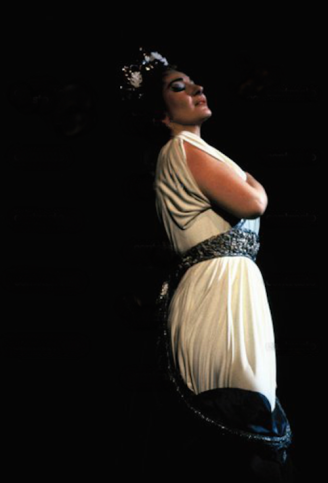
Move on, then, to Norma’s second act confrontation with Pollione. The ferocity with which Callas imbues the line, “In mia man alfin tu sei” (“Your life is finally in my hands”), is utterly frightening, especially as she hurls the word, “Giura!” (“Swear it!”), at her former lover. In the stereo remake, Callas is partnered with full-throated abandon by tenor Franco Corelli, who makes a worthy partner to this tigress, matching her decibel for decibel. This is what WQXR radio announcer George Jellinek once termed as “acting with the voice.” Callas had the innate ability of getting underneath the written text, at finding the hidden meaning behind what she was singing. This is the model to which all others must be compared.
In other roles, Jamie Barton sang Adalgisa with ample volume but veiled tone (at least, that’s how she came across on the radio). British bass Matthew Rose lent weight and solidity to Oroveso. But like the above artists, Rose had some notable competition in that his music has been sung by the finest bassos around, to include the mighty Italians Ezio Pinza and Tancredi Pasero, and the Bulgarian Boris Christoff, along with Met stalwart Cesare Siepi (vide that 1970 radio broadcast mentioned above).
The opening chorus and subsequent march tunes, as the Druids gather in force against their Roman captors, have been described as nothing more than Salvation Army music. Be that as it may, Verdi was much obliged to Bellini for this bandmaster’s approach to his score. You can find traces of Bellini’s choral writing in such early Verdi works as Nabucco, I Lombardi, and Ernani, up through Il Trovatore and La Forza del Destino and the later Don Carlos and Aida.
As the duplicitous Pollione, Maltese tenor Joseph Calleja held up his end in the ensembles. In his duets with Meade and Barton, however, he seemed too lightweight to take command. This Roman proconsul would wither at the drop of a hat if he had to confront the likes of a Maria Callas or a Rosa Ponselle. Plainly put, the role lies too low for him, some solid high notes excepted.
Again, I must go back to that 1970 broadcast, where Pollione was sung by the stylish but portly Carlo Bergonzi, not by nature a bel canto specialist or the possessor of a strong physical presence. At the time, I felt that Bergonzi was a good decade too late for the assignment. Still, he managed to modify his usual seamless approach by giving full value to the text, which carried him through to the end.
In that same 1970 broadcast of Norma, the podium master was Joan Sutherland’s husband, Sir Richard Bonynge. A conductor, vocal coach, and concert pianist in his own right, Bonynge was an early champion of the bel canto cause. An Australian by birth, he met and afterwards married Ms. Sutherland in the mid-1950s. Through his coaching, he was able to bring out the bel canto refinements in Dame Joan that made her a household name in the opera realm.
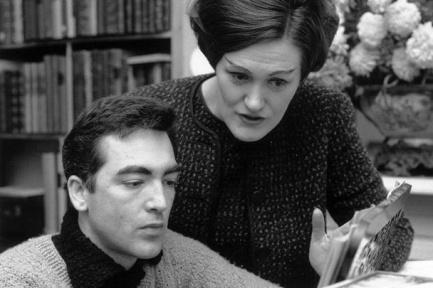
Bonynge employed his essentially pedantic conducting style to such places as Vancouver, San Francisco, New York, and Europe, as well as his native Australia. Along with Callas, Caballé, Bonynge, and Sutherland — and in league with Italian maestros Vittorio Gui and Tullio Serafin — the singers Giulietta Simionato, Luigi Alva, Leyla Gencer, Ebe Stignani, Fedora Barbieri, and Sesto Bruscantini, joined later by Beverly Sills, Cecilia Bartoli, Luciano Pavarotti, and others brought flair and substance to the neglected works of Rossini, Bellini, and Donizetti. It’s to them that we owe the revitalization of such obscure items as Anna Bolena, Roberto Devereux, Armida, Il Pirata, Il Turco in Italia, L’Italiana in Algeri, and a crowd of others.
But without Callas spearheading the revival in the 1950s, there would be no bel canto tradition as we know it. While there has been a vast improvement in the techniques needed to perform these essential works, with singers (especially tenors) having upped the ante in ability and skill (thanks to such artists as Juan Diego Flórez, Javier Camarena, and Lawrence Brownlee, to name a few of today’s specialists), there is still much work to do in convincing audiences of the viability of bel canto in the modern world.
Copyright © 2017 by Josmar F. Lopes
Advertisements &b; &b;
